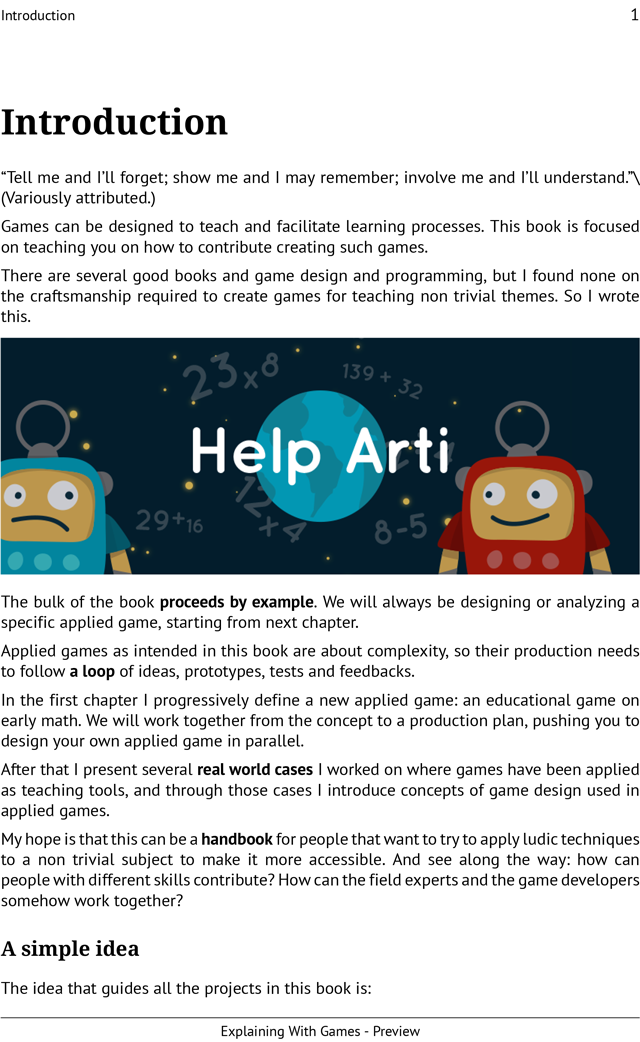Games can be designed to teach and facilitate learning processes. This book is focused on teaching you on how to contribute creating such games. There are several good books and game design and programming, but I found none on the craftsmanship required to create games for teaching non trivial themes. So I wrote this.
The bulk of the book proceeds by example. We will always be designing or analyzing a specific applied game, starting from the sample game Help Arti.
I send a mail at most once per month about new games, ideas, experiments concerning game design and learning:
Subscribe














